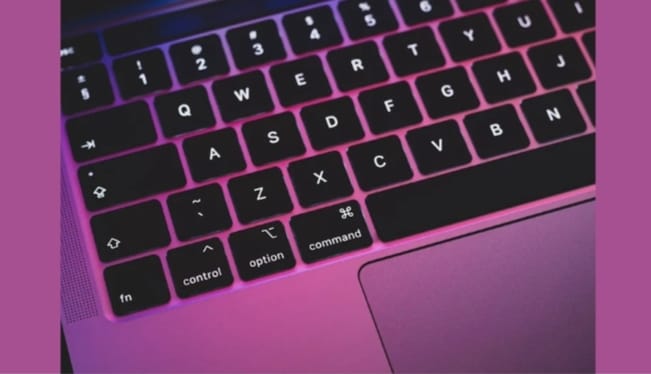This blog post will look at what to do if your volume button is not working on Mac. We’ll cover some potential solutions and workarounds that you can try.
How to enable volume control on keyboard mac? Is this the first time you’ve been unable to manage the volume using your keyboard?
If this is the case, don’t freak out. You may have accidentally locked the keys, modified the keyboard settings, or had a software problem on your Mac.
While you can control the volume or even silence it straight from your laptop, sometimes it is more convenient to utilize the volume buttons.
In the end, there are several solutions to solve your issue. Keep reading for additional information on how to fix and troubleshoot your Mac’s volume keys. So let us discuss briefly our topic “My Volume Button is not Working on Mac.”
When Volume Button is not Working, Which other Keys Control Volume on Mac?
The most functional keys on your Mac keyboard are the volume controls. It is the main reason they cease working each day’s end.
If you’re experiencing this problem for the first time, you’re probably wondering: Volume and brightness keys not working Mac? And how do I correct them? We understood your argument. Fortunately, there is a practical solution to this problem.
What else do we require? You may find information on a valuable technique to make your volume buttons function correctly below. Look at it.
Common Causes Why Volume Button is not Working in Mac

My Volume Button is not Working Mac. What can I do? The volume buttons are next to the power button in the upper right corner of every Mac keyboard. You can access the Mute, volume down, and volume up buttons via F10, F11, and F12 are the normal function keys.
Despite their convenient location, the volume keys on some devices might cease working for various reasons. The following section lists some of the most prevalent causes of volume buttons that don’t work.
- You may have mistakenly activated the function key option in your keyboard choices. It’s possible to encounter issues with volume control if you’re using F10, F11, or F12.
- Malware can interfere with your laptop’s audio drivers, video codecs, and other components.
- You may have mistakenly modified your sound settings while moving between audio devices like built-in Mac speakers.
- Chrome addons can also harm media keys.
- In addition, you may be experiencing a problem with your speaker or your keyboard. Another possibility is that you can’t use the volume keys because a plug has come loose or fallen out of your headset.
Various issues might cause volume keys not to work on Mac. Before bringing your laptop into an Apple Store, try some of the troubleshooting steps listed below.
How Can I Get My Keyboard’s Volume Buttons To Work?
If you can’t figure out what’s wrong with your volume keys, there are several things you can do to get them working again. Here are a few tips to aid you along the way.
Method #1: Restart your Mac
Rebooting your laptop can solve many problems, even though it may seem apparent and uncomplicated.
This is especially true when your laptop’s volume buttons stop working because of poor processing, spyware, bugs, and software difficulties. To restart your Mac, pick restart from the Apple logo menu.
Method #2: Sound Settings
It’s preferable to examine your internal settings before diving into hardware. Even something as simple as switching speakers or adjusting the sound settings on your Mac might be to blame.
- The sound may be found under System Preferences.
- If the mute option is active or disabled, check the Output tab. Turn it off if it’s on.
- Examine all devices under “Sound Output” to see what’s available. External speakers should be selected in the list if you’re utilizing them. Meanwhile, if you’re using Mac speakers, choose the option for internal speakers from the drop-down menu.
If you can still not adjust the level using the keyboard buttons, unplug all of your Mac’s peripherals and retest the Sound.
Method #3: Keyboard Configuration
Whether the first two techniques don’t work, check your keyboard’s settings to see if the issue is with the volume keys there. The keys might have been switched off accidentally, for example, if you altered the keyboard setting.
To ensure that your keyboard settings are correct, follow these instructions.
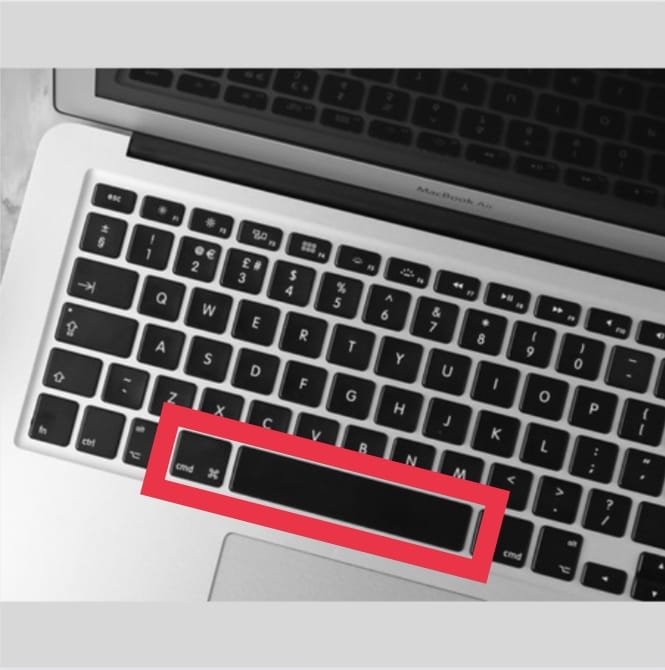
- Command and space combined will bring up Spotlight.
- Run the Keyboard System Preferences application
- Make sure the function keys are enabled or deactivated next.
- As long as you are authorized, please turn it off.
How Do I Get f11 and f12 to control volume on Mac? F10, F11, and F12 may not have worked in the function key option enabled on your computer.
Core Audio Reset
Resetting the core audio on your Mac is one technique to get the volume control back on your keyboard. To do this, kill the process responsible for supporting your Mac’s sound system. Using the laptop’s Terminal and Activity Monitor, you may accomplish this.
There are two ways to shut down your Mac’s audio system for good.
Method #1
- To open Spotlight, press the command and space keys simultaneously on your keyboard.
- Launch Terminal by typing its name into the search bar
Sudo kills all CoreAudio will follow.
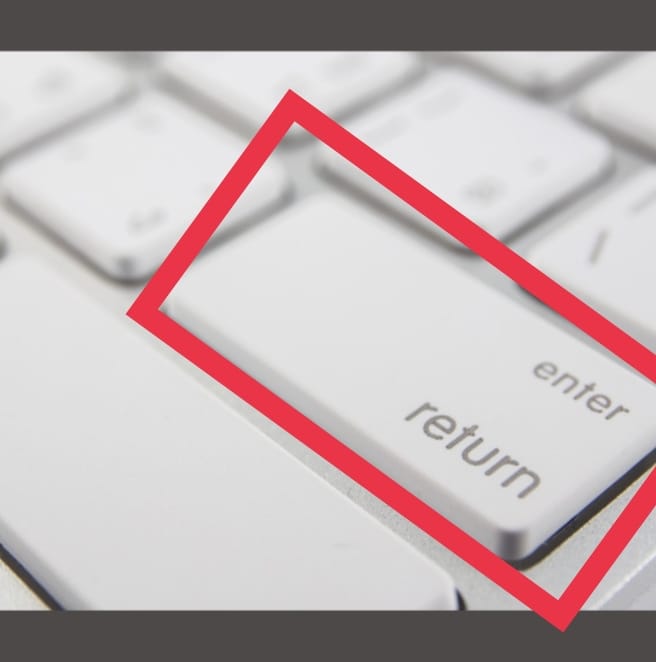
- To execute the command, press enter.
- Enter the administrator password in some instances.
Method #2
You may also use the Activity Monitor to restore core audio instead of just the Terminal. You may bring up the Spotlight search by holding down the command key and the spacebar on the keyboard.
- Start the program by typing in “Activity Monitor.”
- In the search field, enter CoreAudio and click the button to choose it.
- Finally, press (X) to close your computer’s audio system.
Reset PRAM/NVRAM
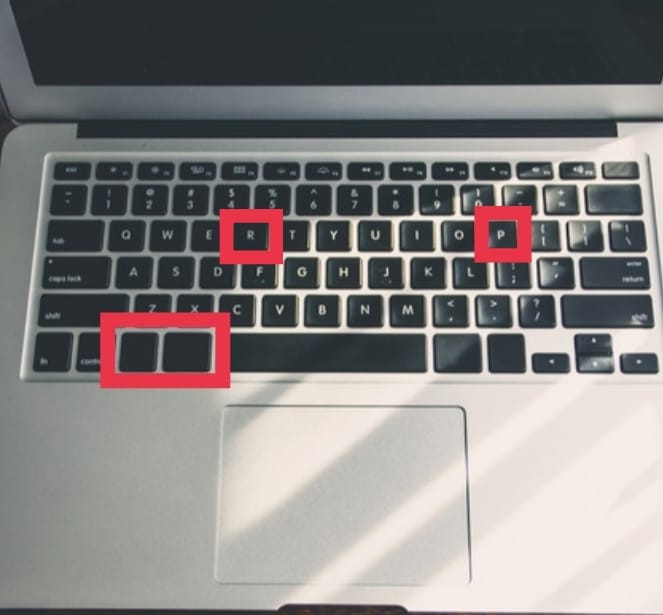
Your Mac’s PRAM or NVRAM stores all the information about your speaker volume. PRAM is where your data is stored if you’re using an older laptop.
Resetting the information in PRAM or NVRAM might help you repair your Mac’s volume control issue. The following part will show you how to put this strategy to good use.
- To begin, shut down your computer.
- Turn on your Mac by pressing the power button.
- Press and hold Option (alt), Command, P, and R simultaneously until you see the Apple logo appear on the screen.
Keep pressing all four keys until you hear a chime from your Mac and your machine restarts without letting go.
- After the laptop’s second starting sound or three chime sounds, you can release the keys.
- Enter your login credentials and password when your Mac starts up typically.
- Play a movie and see whether using the volume keys on your keyboard restores your volume control.
Remove Google Music Extension
Specific addons on your Google Chrome browser could interfere with the volume controls. The Google Music Extension, in particular, prevents the macOS Mojave volume keys from operating.
A notable feature of the plugin is that it controls both your laptop’s media keys and your iTunes. This means you should remove the addon, restart your Mac and recheck the volume keys.
Updating the Mac
If none of those above approaches work, you might want to consider upgrading your Mac’s operating system. Your volume key issue may be resolved due to this update, which includes all currently available drivers and software.
Following these simple steps will allow you to do an OS upgrade on your computer with ease.
- If you’re using a Mac, go to System Preferences.
- Click on the Software Updates option if you see it.
- Ensure you have the most recent version installed, and then follow the on-screen instructions.
- Ensure the safety of any important data by creating a backup copy.
Visit the Apple Store and get the most recent version if you’re still on an earlier operating system like macOS High Sierra.
Audio-Midi Setup
Check the audio midi settings on your Mac if you’ve tried everything else and still can’t get volume control back on your Mac. Make sure everything is set up correctly by following these steps.
- Press the command and space keys simultaneously to open the Spotlight search bar.
- Double-click on Audio Midi Setup in the search box to start it.
- Make sure that the Built-in Output option is chosen before proceeding.
- The format should be set to 2ic-16 bit Integer and 44100 Hz at the bottom of the pop-up screen.
What To Do If The Sound On Your Mac Doesn’t Work?
Why isn’t your Mac responding? Please tell me why there is no sound from the speakers inside. This article will help you determine what’s wrong if the volume controls or the headphone port has a flashing red light.
If your Mac’s internal speakers have stopped working, try the methods below to get them to work again. What can you do if the speakers on your Mac aren’t working? Mac Volume button brings up dashboard.
Fixing Sound And Speaker Issues On A Mac
If your Mac’s sound stops working, follow these steps:
- Step #1: To confirm that there is no sound coming from your Mac, play something on Music (Music replaced iTunes, so if you’re in an older macOS, you’ll want to use iTunes).
Streaming Music Any song in your music library may be selected by clicking on Songs and then setting it. Even if you can’t hear the Music, the progress bar should continue to move once you push Play.

- Step #2: If it is, hit the Volume Up button on the F12 key in the top-right corner of your keyboard to increase the Volume. To activate this, you should see an overlay appear on your screen, and the Volume should increase as a result.
- Step #3: If the volume slider is far to the left of the slider in the Music app, shift it to the right.
- Step #4: If it doesn’t work, go to the top of the screen and click on the Volume option in the Menu bar. Big Sur or Monterey users will find it under the Control Panel heading on their menu bar. Move the sound slider to the left.
- Step #5: Check another app: If iTunes or Music play sound, but Safari doesn’t, Safari’s sound may be off. When watching a video in Safari, when there is no sound, you should be able to change the Volume in the video window. Video playback may be muted by default, requiring a user to activate the sound option to watch.
- Step #6: Turn your Mac off and back on: Restarting your Mac can sometimes cure a problem like this.
- Step #7: Make sure you don’t have headphones connected to the Mac by checking your headphone socket. If they are, remove them, and you should be able to hear Mac’s built-in speakers playing Music.
- Step #8: Check your ports: Unplug anything from your Mac, not just the audio port, because USB devices may be channeling the audio. Remove any cables that may be connected to any of these ports.
- Step #9: Check for debris in the headphone jack: the port may be clogged with fluff or dust. If the port is blocked, the Mac may act like headphones are plugged in. Plug in some headphones and check if it cures the problem by pushing and holding one of the volume buttons.
- Step #10: Update your macOS to the newest version.
- Step #11: Restart the sound controller: Open Activity Monitor and find ‘CoreAudio’ in the list of processes. The procedure will restart right immediately, which may help you resolve the issue you’re having.
- Step #12: Open System Preferences > Sound. Select Internal Speakers from the Output tab. Make sure the Mute button adjacent to the Output Volume is unmuted. Adjust the output volume by dragging the slider to the right.
- Step#13: Is there a speaker in the room? Do not use your Mac if Digital Out appears instead of Internal Speakers in the system preferences box. If the Output panel still doesn’t show Internal Speakers as an option, you’ll need to get in touch with Apple Support.
- Step #14: Resetting the PRAM can fix some sound-related difficulties. Hold down Command, Option (or Alt), P, and R while restarting the Mac. Please keep them in place until the computer begins to chime. Until it sounds again, keep the keys pressed down. Then, release them.
- Step #15: You may learn how to accomplish this here: Reset the System Management Controller (SMC).
- Step #16: As a last resort, you may need to take your Mac to a repair shop if this doesn’t fix the issue.
- Step #17: Take your Mac to an Apple Store to get the hardware checked out if none of these solutions work. Make an appointment at an Apple Store by following these instructions.
Fixing a Mac That Won’t Connect To Speakers And Headphones
For external speakers or headphones that don’t function on your Mac, follow these instructions:
- Check whether it works on another device, such as an iPod touch or iPhone, by unplugging it from the speaker/headphones and plugging it back in.
- Unplugging and re-plugging may be all it takes to get everything operating again.
- A piece of fluff or dust in the headphone jack may prevent it from working correctly.
- Press and hold one of the volume buttons on your headphones (or speaker) while you plug them back in. Check to see if that has any effect on the problem.
- Verify the volume of your speaker or earbuds. 6. Some speakers have volume controls built in. You may discover that they have been scaled down to a bare minimum or shut off.
- Unplug any other plugged-in devices from your Mac, including Thunderbolt, HDMI, and USB devices, since they may be stealing audio from your headphones or speakers and sending it elsewhere. Because of this, if you’re wondering why you do not hear sound from your Mac speakers, it’s because the HDMI sends the sound to your TV.
- While the images on your TV screen are displayed, you should be able to pick your Mac’s speakers from the menu bar at the top right of the screen by right-clicking on the audio icon and selecting your speakers.
- Restarting your Mac may be all needed to fix a problem like this.
- You may do this by opening Activity Monitor and selecting “CoreAudio.” Then, click on the X to exit the process. The procedure will restart right immediately, which may help you resolve the issue you’re having.
- Check to see if your computer has the most recent Mac OS X installed.
- You can try Apple headphones if you’re having trouble with non-Apple ones; they may work.
- If none of these suggestions work, you may have to have your hardware examined by Apple. Make an appointment at an Apple Store by following these instructions.
How To Fix A Mac That Won’t Play Sound Through A TV?
Follow these steps to ensure that your Mac’s speakers receive sound while connecting the TV to your Mac through HDMI.
- Open System Preferences and select Sound from the menu. If you want to play sound from your connected TV, pick HDMI from the Output menu. Click the Output tab. Alternatively, you may choose HDMI by right-clicking on the sound icon in the menu bar.
- Even though this is an infrequent occurrence, it is essential to check your equipment to see whether it can receive the audio that HDMI connections are capable of transmitting. Take a look at your setup to ensure this isn’t the case.
- Make sure your HDMI cable isn’t wrapped in coils or twisted. Make sure that there are no bent pins in the HDMI port where the cable is attached.
- Resetting the PRAM and SMC on your Mac is one of the techniques you can try in the instructions above.
How To Modify Mac Sound And Alert Volume?
Even though it’s not an intimate setting, it may significantly affect whether you miss beeps or hear them through your headphones. The Sound preference pane in macOS offers two different ways to adjust Mac’s audio output volume.
- The “Output volume” slider may be dragged left or right in the Sound option pane at the bottom. A keyboard’s volume control keys and the Control Center or Sound menu option can also be used.
- “Alert volume” determines how loud system noises are created to signal activity or a notice on the Sound Effects tab in the Sound settings pane.
- People who don’t bother to lower the Alert volume on the Sound Effects tab are subjected to a constant barrage of pings, plinks, and boops that are several decibels louder than the music they’re listening to. A low or deactivated volume might prevent you from hearing vital audio feedback from your activities or your app.
- Note that the “Play sound effect through” popup option allows you to divide audio feedback to any specified sound output device rather than routing it through the output destination set in the Output tab of the Sound preference pane.
- Rogue Amoeba’s SoundSource ($39) also gives a full system menu of choices for fine-tuning and managing Mac’s audio system.
The Volume Buttons on Your iPhone and Mac Can Do More Than Adjust the Volume
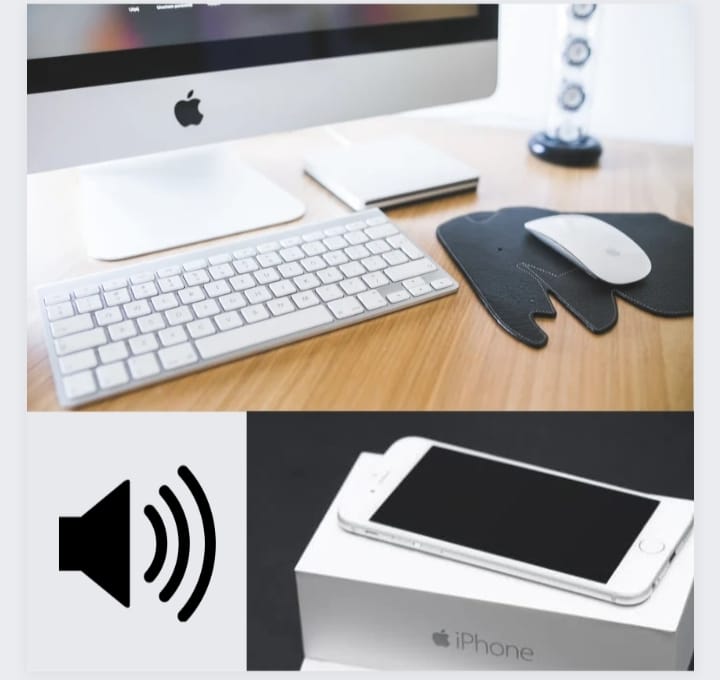
When using your iPhone’s volume controls, you can do much more than changing the volume for media, ringers, alarms, and other voice-driven functions.
Some applications have built-in shortcuts, but you may create your own with the Shortcuts app. But it’s the closest you’ll come to button mapping without a jailbreak on iOS 15.
While certain third-party apps can use the iPhone’s volume buttons for purposes other than volume changes, iOS is the only operating system that allows this.
Apps uploaded to the App Store must adhere to a strict set of specifications for volume buttons, as you’ll see in the next paragraph.
Take Pictures with Camera Apps
While using the Camera app’s Photo, Portrait, Square, or Pano modes, you may utilize the volume up or down button on your iPhone as a shutter button. By pressing only once, you may use the front or back camera’s Photo, Portrait, or Square modes to capture a moment in time.
Just click the shutter button once to start and end a panorama in Pano mode. Alternatively, you may hold the volume button while starting and stopping the panoramic.
Apple applications, including Contacts, Magnifier, Mail, Notes, and Reminders, all use the same method for shooting photos.
Examples are Adobe Lightroom; Camera+; FiLMiC Firstlight, Focus; Halide Mark II; Pro Camera by Moment; ProCam 8, and Snapseed. The Instagram Stories camera and Snapchat’s camera both work with it.
Camera Apps for Video Recording
To begin recording video with the front or back cameras, press the volume up or down button in the Camera app. Hold the volume button to start recording and release it to stop. It may also be used with third-party video recording software, such as ProMovie Recorder.
Record QuickTakes in Camera
You may record a QuickTake video on the iPhone XS and subsequent models by holding down either of the volume buttons while in the Photo shooting mode.
When you’re through recording, let go of the record button. QuickTakes are convenient since you don’t have to fiddle with the mode option when taking images.
Captured Images in Camera
A QuickTake recording won’t begin if you have an iPhone X or an older model since these iPhones don’t support the capability.
Alternatively, you may press and hold a volume button while in the Photo or Square shooting mode to capture a burst of shots, then release the button to stop taking pictures.
It’s possible to bring back the burst option to one of the volume buttons on an iPhone XS or newer model by long-pressing a volume button.
Select “Use Volume Up for Burst” in Settings –> Camera. Long-pressing the volume will now record bursts, while long-pressing the importance down will continue to record QuickTake movies.
Scanning of Paperwork using Buttons
You can use your iPhone and mac’s built-in document scanner to scan a document in applications like Files, Mail, Notes, and Reminders.
If you assume that you can take a picture of a document with your iPhone’s volume buttons, you’d be correct. It’s a customized version of the Camera app.
Instead of using the shutter button on the screen to capture a scan, you may utilize the volume up or volume down buttons on the document scanner. Once you’ve finished cropping, you’ll need to click and drag the corners to save the image.
Add Your Shortcut Actions!
It’s impossible to use the volume buttons on the iPhone as an automation trigger. Therefore, you can’t start a job by pressing one of them. However, you may include them in your shortcuts and automation by using them as an interactive component.
A notice on your iPhone describes what the volume controls on the device perform when you use them. If you hit book up, you do Action A; if you press volume down, you perform Action B.
It waits for five seconds to allow you enough time to see the notification and hit the volume up or down button. Five seconds later, it downloads the current book once more and compares it to the value already recorded by the shortcut.
If the current volume level is more significant than that value, then Action A comes into play. If it is less, your phone automatically enables the Action B.
Put an End to an Incoming Call
The volume buttons are also quite useful for incoming calls through Phone, FaceTime, and other calling applications. To end an incoming phone call, push the volume up or down button on your phone.
Apple automatically silences the ringer if the feature is in use. It’s up to you whether or not you want to answer, reject the call, or wait for it to ring on your phone’s speakerphone.
If your Volume Button is not Working on Mac, You must Contact Apple Support
It’s time to call Apple Support if you can’t get your volume keys to function again and none of the suggested fixes work. If your laptop has hardware issues, you may need to take it to an Apple shop.
Conclusion
If your Mac’s volume control keys on the keyboard cease working, there are several possible causes. There are a few techniques to regain control of your volume keys, notwithstanding the difficulty of determining the root reason.
Checking your audio and keyboard settings and ensuring that all of your grounds are right in AudioMIDI are some things you can do to fix your laptop’s audio issues. You may fix your broken volume keys by following the instructions in this article.
Take your laptop to an Apple shop if all of these troubleshooting techniques fail to restore the volume keys. Your computer may have a hardware issue that only an Apple staff can resolve. Here we conclude our article “My Volume Button is not Working Mac.” For more information, stay tuned!


